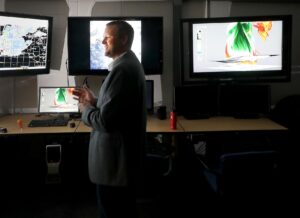
As we have opined a number of times before in this column, the development of numerical weather prediction (NWP) — the use of computers to mathematically produce weather forecasts — is one of the most unheralded scientific advances of the 20th century.
Coupled with the ubiquitous mobile phones we all use, this revolution has enabled us, at a glance, to get a sense of the coming weather days in advance.
It turns out that the first meeting ever convened to discuss the possibility of developing NWP took place just over 75 years ago, on Jan. 9, 1946, at the then-Weather Bureau’s headquarters less than a mile from the White House.
Present at this initial meeting was the chief of the Weather Bureau, Francis Reichelderfer, his top staff, a number of military meteorologists and the Princeton mathematician John von Neumann. Accompanying von Neumann to the meeting was Vladimir Zworykin, a physicist employed by RCA who had invented the scanning television camera. They had come to discuss their proposal to use the electronic digital computer von Neumann was then developing to not only forecast the weather, but also to control it.
As amazing as it sounds to us today, the original impetus for the development of NWP was to calculate where, and to what degree, nuclear explosions might be set off to alter the weather when destructive storms appeared on the forecast horizon. It was thought that this “intelligent” control of the weather would be rooted in reasonably accurate prediction of it for a couple of days in advance.
Fortunately, the evolving ethics of the nuclear age along with the extraordinary challenge presented by the originally secondary problem of providing computer-based forecasts quickly forced a humbler approach to this spectacular advance in weather prediction.

